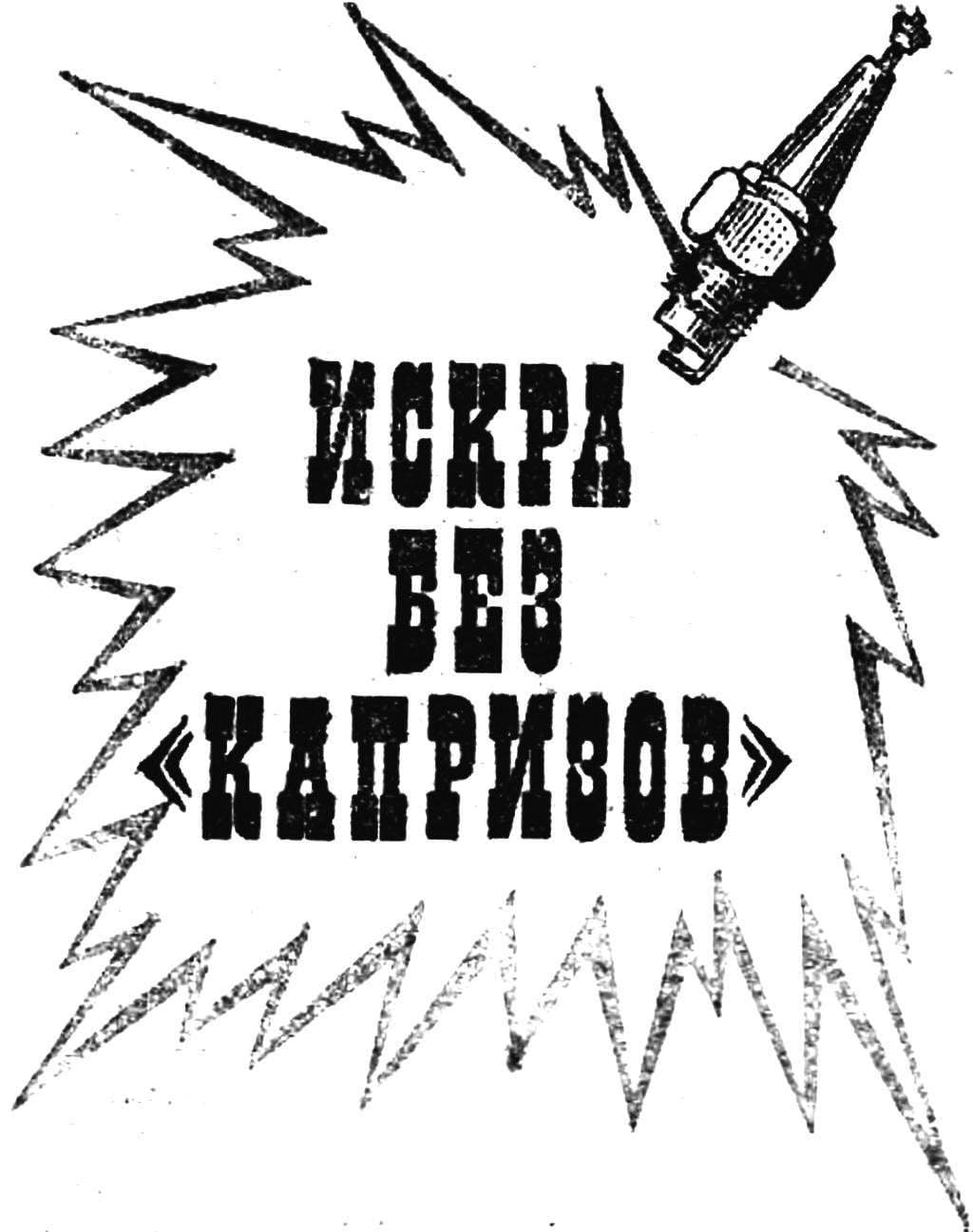Diode V1 suppresses parasitic oscillations in the circuit formed by the capacitor C1 and the inductance of the primary winding of the ignition coil. The elements C2, R2, in the circuit control electrode of the thyristor differencebut (shortened] pulses of the blocking oscillator, and a diode V4 protects the control electrode from overvoltage with a duration of the emission. In addition, V4 disables charged for the duration of the leading edge of the capacitor C2 from the base of the transistor. In the absence of this diode blocking oscillator can switch from the locked mode to the oscillatory and disturbed the operation of the entire device. The diode V5 performs a similar function, protecting the underlying transfer transistor. The Zener diode protects V7 V6 from the breakdown if the unit is turned on without a bobbin or without spark plugs.
The device is insensitive to the rattling of the contact plates of the circuit breaker. When they first open, the transistor V6 is open, and will remain in this state until the beginning of the transformer saturation regardless of future position of the breaker.
The transformer T1 is made on the yoke ШЛ16Х25 with a gap of about 50 MK. The winding of I contains 60 turns of wire sew-2 1,2, II—60 turns of PEV-2 0,31, III — 360 turns of PEV-2 0,31. The transformer core can be printed from the W-shaped iron. However, due to uneven trim plates clearance, even without spacers, can be great. In this case, the necessary polishing of the irregularities at the junction of the magnetic circuit.
КТ805А transistor can be replaced by КТ805Б, but because of higher values of saturation voltage, it will dissipate and some high power that can lead to self-blocking-generator at high temperatures. Therefore, the transistor КТ805Б it is advisable to install additional heat sink area of 20 — 30 cm2.
Instead of diodes Д226Б you can apply КД105Б — КД105Г, КД202К — КД202Н (V1, V3), Д223 (V4).
C1 is composed of two parallel-connected capacitors MBGO-1 0.5 UF at a voltage of 500 V. the C2 and C3 — MBM.
Thyristor КУ202Н permissible to replace КУ202М or КУ201И, КУ201Л. Because КУ201 forward voltage does not exceed 300 V, so the voltage on the storage capacitor is reduced to 210 — 230 V by increasing its capacity to 2 UF. Moreover, noticeable effect on the energy of the spark is not provided.
Fig. 3. Circuit Board with the layout of the parts (M1:1).
For establishing the device you need avometr and simulator breaker — any electromagnetic relays, driven by a sound generator. Relay can be connected through step-down transformer to a lighting network. The frequency of the trigger pulses will then be equal to 100 imp/sec. With series-connected diode launch frequency will be 50 CPS.
If the items are serviceable and the terminals of the transformer are connected correctly, the device starts to work immediately. Check that the voltage on the capacitor C1 was 300±30 V when you change the value of nutrition in the above mentioned limits. Measure the voltage should peak voltmeter, using the scheme presented in figure 2.
The device is connected to the junction point of elements C1, V2, VЗ and, by changing the size of the gap in the transformer core, to achieve the required voltage. If it is low, the thickness of the strip increases. If you reduce the gap the voltage must fall.
When the ambient temperature is low, the energy of the spark may fall. In this case, it is necessary to reduce the value of the resistor RZ, since at low supply voltage the thyristor V2 may not open.
The installation of this appliance is performed by printing on the Board size 95X35 mm, made of foil Micarta or fiberglass (Fig. 3). Constructive execution of the block electronic ignition the most various — depending on available material and the installation of the device.
V. BAKUMTSEV, Bugulma
 Motorists made electronic blocks of ignition, as a rule, according to the classical scheme consisting of a high voltage source, a storage capacitor and a thyristor key. However, such devices have several drawbacks. The first of them is low efficiency. Since the charge storage capacity can be likened to the charging of the capacitor through a resistor, the efficiency of the charging circuit does not exceed 50%. So, about half consumed by the power Converter will be allocated in the form of heat” on the transistors. So they need more heat sinks.
Motorists made electronic blocks of ignition, as a rule, according to the classical scheme consisting of a high voltage source, a storage capacitor and a thyristor key. However, such devices have several drawbacks. The first of them is low efficiency. Since the charge storage capacity can be likened to the charging of the capacitor through a resistor, the efficiency of the charging circuit does not exceed 50%. So, about half consumed by the power Converter will be allocated in the form of heat” on the transistors. So they need more heat sinks.
